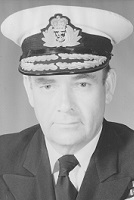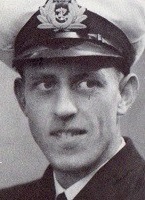|
HMS SHEFFIELD
Southampton Sub Class of the Town Class Light Cruiser
This page is not meant to be a comprehensive history of HMS SHEFFIELD, but a record of sailors of the ROYAL CANADIAN NAVY who served in her, photos they took and stories they may have shared with their families.
At the outbreak of war, Sheffield served with the 18th Cruiser Squadron, patrolling the Denmark Straits and then, in April 1940, she was engaged in the Norwegian Campaign. After a short spell carrying out anti-invasion duties in the English Channel, she joined Force H, based in Gibraltar. During that time, she operated in the Mediterranean and the Atlantic until the year's end, and took part in Operation White and the battle of Cape Spartivento.
In 1941, she participated in Operation Grog, the shelling of Genoa, in operations against Vichy convoys and supporting air reinforcements to Malta. In May, Sheffield took part in the sinking of the German battleship Bismarck, narrowly escaping a friendly fire torpedo attack by the aircraft carrier Ark Royal's Fairey Swordfish; eleven torpedoes were dropped and only defective Duplex exploders and fine ship handling saved her from disaster.[4] (In the report of the attack, Admiral Sir John Tovey, commanding Home Fleet, was told only no hits were scored on Bismarck.[5] The reaction of Sheffield's crew "has not made its way into the official records".)[6] On 12 June, she located and sank one of Bismarck's tankers, Friedrich Breme. After the destruction in early October 1941 of another German supply ship, Kota Penang, (aided by the cruiser Kenya), Sheffield returned to Britain.
She was occupied on Arctic convoys until hitting a mine off Iceland on 3 March 1942 and was under repair until July. After more Arctic convoys, Sheffield joined the forces supporting the Allied landings in North Africa (Operation Torch) in November. In December 1942, Sheffield and Jamaica formed "Force R", under the command of Rear-Admiral Robert Burnett (in Sheffield), which provided cover for Convoy JW 51B. The convoy was attacked by a strong German surface force. In the ensuing action (Battle of the Barents Sea), the Germans withdrew and Sheffield sank the German destroyer Friedrich Eckoldt, while also damaging the cruiser Admiral Hipper, Eckoldt mistaking Sheffield for Hipper. During this engagement, the destroyer Achates and the minesweeper Bramble were sunk by gunfire of the two German vessels.
In February 1943, Sheffield moved to operate in the Bay of Biscay and, in July and August, she supported the landings at Salerno (Operation Avalanche). Returning yet again to the Arctic, she took part in the sinking of the battleship Scharnhorst off the north coast of Norway, in late December.
In 1944, Sheffield was an escort for the Royal Navy carrier force that executed a series of air attacks on the German battleship Tirpitz, between April and August. These had limited success and responsibility was passed to the Royal Air Force.
A lengthy refit in Boston and in Britain kept Sheffield out of action until after the end of the war.
They shall not be forgotten
|





